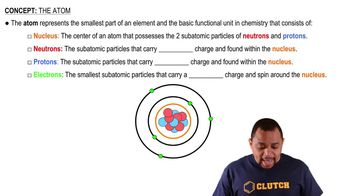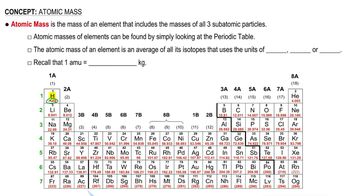Here are the essential concepts you must grasp in order to answer the question correctly.
Atomic Structure
Atoms consist of protons, neutrons, and electrons. Protons are positively charged particles found in the nucleus, while neutrons are neutral particles also located in the nucleus. Electrons are negatively charged and orbit the nucleus. The number of protons defines the element, while the total number of protons and neutrons gives the atomic mass.
Recommended video:
Isotopes
Isotopes are variants of a particular chemical element that have the same number of protons but different numbers of neutrons. This results in different atomic masses for the isotopes. For example, bromine-79 (79Br) has 35 protons and 44 neutrons, while another isotope may have a different neutron count, affecting its stability and properties.
Recommended video:
Mass Number
The mass number of an atom is the sum of its protons and neutrons. It is a whole number that represents the total mass of the nucleus. In the context of the table, filling in the mass number requires adding the number of protons and neutrons for each atom, which helps in identifying the specific isotope and its characteristics.
Recommended video:




